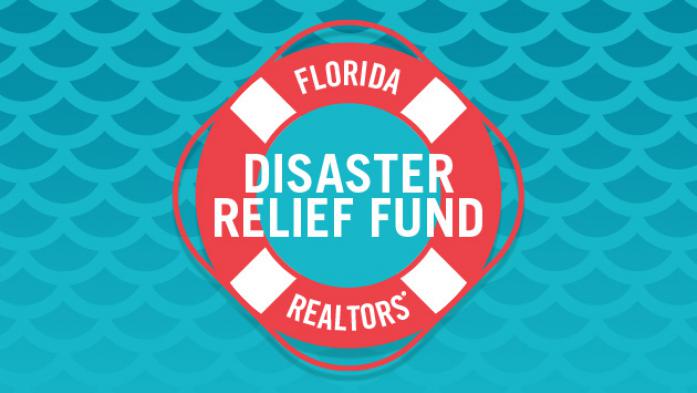Forecasters project 23 named storms this year. Sales tax holidays this year – June 1-14 and Aug. 24-Sept. 6 – eliminate taxes on some disaster-preparedness supplies.
TALLAHASSEE, Fla. – Floridians received a second reminder Thursday to brace for a busy 2024 hurricane season, as Colorado State University researchers issued a forecast pointing to warm Atlantic Ocean water that fuels storms.
Philip Klotzbach, a senior research scientist in the university’s Department of Atmospheric Science, said the forecast for a “very, very busy hurricane season” is based on expected La Niña conditions in the summer, resulting in hurricane-favorable wind shear conditions and warm water.
“Pretty much the entire Atlantic is very warm right now,” Klotzbach said during an appearance at the National Tropical Weather Conference in South Padre Island, Texas.
Florida Realtors Disaster Relief Fund: There When You Need It
“If you look at the current sea-surface temperatures in the tropical Atlantic, and you say, ‘OK, we’re going to warm at the slowest rate that we’ve warmed between now and the peak of the season,’ you’re still talking water temperatures that are like top-five warm,” Klotzbach said. “So, unfortunately, I think there’s at least a little bit of, somewhat, the die is cast for 2024.”
The university projected 23 named storms and 11 hurricanes, with five reaching major hurricanes status. Klotzbach said that while not perfect, the estimates represent the highest April forecast numbers the university has produced.
By comparison, the Atlantic season from 1991 to 2020 averaged 14.4 storms a year, with an average of 7.2 reaching hurricane strength.
The 2023 season was the fourth most active on record with 20 named storms, of which seven reached hurricane strength and three were major storms. The hurricane season starts June 1 and lasts through Nov. 30.
“It’s always the caveat that we say with all of our forecasts that they are certainly not perfect,” Klotzbach said. “It only takes that one hurricane near you to make it a busy season.”
The forecast doesn’t include projected storm paths. But Klotzbach said models anticipate a well-above-average probability for major hurricanes making landfall along the U.S. coastline and in the Caribbean. The La Niña phenomenon elevates conditions for storms coming off Africa and crossing the Atlantic.
Klotzbach said the forecast will be better defined as the season gets underway, comparing the numbers released Thursday to a “10-day weather forecast as opposed to the forecast for today.”
Last week, the private meteorology company AccuWeather also projected a “turbulent” season in the tropics. It said the first storm could occur before June 1 and that the overall number could exceed a list of names.
“The 2024 Atlantic hurricane season is forecast to feature well above the historical average number of tropical storms, hurricanes, major hurricanes and direct U.S. impacts,” AccuWeather Lead Hurricane Forecaster Alex DaSilva said.
The World Meteorological Organization maintains lists of 21 names used annually for Atlantic storms.
“Sea-surface temperatures are well above historical average across much of the Atlantic basin, especially across the Gulf of Mexico, Caribbean and the main development region (for hurricanes),” DaSilva said.
DaSilva noted the Atlantic temperatures in March were at or warmer than before the active 2005 and 2020 hurricane seasons.
Four named storms in 2023 had direct impacts on the U.S., including Hurricane Idalia, which made landfall as a Category 3 storm in late August in Florida’s Big Bend region. Florida in recent years also has seen massive damage from Hurricane Ian, Hurricane Michael and Hurricane Irma.
During an appearance Thursday in Davie, Gov. Ron DeSantis said the state prepares for hurricane season regardless of the forecast. He also praised storm-preparation efforts, including better construction to withstand storm winds.
“I don’t want to see a hurricane, you know, come in this area (Southeast Florida),” DeSantis said. “But this area is much better prepared now than it was 30 years ago. You saw it in Southwest Florida with a lot of those structures (with Hurricane Ian in 2022) where you had very modest and even no damage to a lot of the newer construction.”
The Legislature last month approved a tax package (HB 7073) that includes two sales-tax “holidays.” During those periods, people will be able to avoid paying taxes on disaster-preparedness supplies ranging from batteries to portable generators.
The first 14-day holiday will coincide with the start of hurricane season, and the second holiday is set for Aug. 24 through Sept. 6, just ahead of the historic peak of the season.
© 2024 The News Service of Florida. All rights reserved.
Go to Source
Author: amyc




